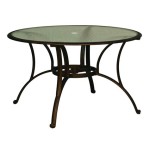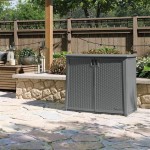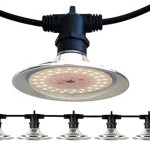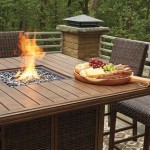```html
Outdoor Propane Table Top Fire Pit: A Comprehensive Guide
Outdoor propane table top fire pits have emerged as a popular choice for homeowners and renters alike, offering a convenient and aesthetically pleasing way to add warmth and ambiance to outdoor spaces. These compact fire features provide a safer and cleaner alternative to traditional wood-burning fire pits, eliminating the need for chopping wood, dealing with smoke, and cleaning up ashes. Their portability and ease of use make them suitable for a variety of settings, from small balconies and patios to larger decks and gardens. This article provides a detailed overview of outdoor propane table top fire pits, covering their benefits, features, selection criteria, safety considerations, and maintenance requirements.
The fundamental design of a propane table top fire pit consists of a burner, a fuel source connection, and a decorative housing. The burner, typically made of stainless steel, is designed to distribute the propane gas evenly, creating a visually appealing flame pattern. The fuel source connection allows for the attachment of a standard propane tank, usually a 20-pound propane tank that is commonly used for gas grills. The housing, which can be constructed from various materials such as steel, aluminum, concrete, or ceramic, serves as a decorative element and also provides a protective barrier around the burner.
Key Benefits of Outdoor Propane Table Top Fire Pits
Outdoor propane table top fire pits offer a range of advantages over other types of outdoor heating solutions. These benefits contribute to their increasing popularity among consumers seeking a convenient and stylish way to enhance their outdoor living spaces.
Convenience and Ease of Use: Propane table top fire pits are remarkably easy to operate. They typically feature a simple ignition system, often a push-button igniter or a match-lit valve. Starting a fire is as simple as turning on the gas and igniting the burner. Similarly, extinguishing the fire is equally straightforward, requiring only the turning off of the gas valve. This ease of operation makes them ideal for those who want the ambiance of a fire without the hassle of wood-burning alternatives.
Furthermore, propane table top fire pits require minimal setup. Unlike built-in fire pits or wood-burning stoves that may necessitate complex installations, table top models are often ready to use after simply connecting the propane tank. The portability of these units adds to their convenience, allowing users to easily move them around the patio or deck as desired.
Cleanliness and Reduced Emissions: Compared to wood-burning fire pits, propane table top fire pits produce significantly fewer emissions and do not generate smoke, ash, or embers. This makes them a more environmentally friendly option and eliminates the need for extensive cleanup after use. The absence of smoke also contributes to a more pleasant outdoor experience for both the user and their neighbors, reducing the risk of nuisance complaints.
The clean-burning nature of propane also minimizes the potential for soot buildup on outdoor furniture and surfaces. This reduces the need for frequent cleaning and maintenance of surrounding areas, saving time and effort. This cleanliness is a significant advantage for those who value a pristine outdoor environment.
Safety Features: Modern propane table top fire pits are equipped with various safety features designed to prevent accidents and ensure user well-being. These features often include automatic shut-off valves that cut off the gas supply in the event of a tip-over or flameout. Some models also incorporate flame failure devices that automatically shut off the gas if the flame is extinguished by wind or other factors.
Additionally, the enclosed design of many table top fire pits helps to contain the flames and prevent accidental contact, reducing the risk of burns. The use of high-quality materials in the construction of these units further enhances their safety, ensuring durability and resistance to high temperatures. By adhering to safety guidelines and regularly inspecting the unit, users can minimize the potential for accidents and enjoy the fire pit with peace of mind.
Key Features to Consider When Choosing a Propane Table Top Fire Pit
Selecting the right propane table top fire pit involves carefully considering several key features to ensure it meets individual needs and preferences. Evaluating these features—size, materials, BTU output, and aesthetic design—can help consumers make an informed decision.
Size and Portability: The size of a propane table top fire pit should be proportionate to the available outdoor space. Smaller units are ideal for balconies and small patios, while larger models may be more suitable for larger decks or gardens. Consider the dimensions of the table or surface on which the fire pit will be placed, ensuring it can comfortably accommodate the unit without obstructing movement or creating a safety hazard.
Portability is another important factor, especially for those who plan to move the fire pit frequently. Lightweight models constructed from materials such as aluminum or composite materials are easier to transport than heavier units made of concrete or steel. Some units also feature built-in handles or carrying cases to further enhance their portability.
Materials and Durability: The materials used in the construction of a propane table top fire pit significantly impact its durability and longevity. Stainless steel burners are highly resistant to corrosion and high temperatures, ensuring reliable performance over time. The housing material should also be weather-resistant and capable of withstanding exposure to the elements.
Concrete and ceramic housings offer a stylish and durable option, while steel and aluminum housings provide a lightweight and more affordable alternative. Consider the overall construction quality and the thickness of the materials, opting for models that are built to last. Regularly cleaning and maintaining the fire pit can further extend its lifespan.
BTU Output and Heating Capacity: BTU (British Thermal Unit) output is a measure of the heat produced by a propane table top fire pit. A higher BTU output indicates a greater heating capacity, making it suitable for larger outdoor spaces or colder climates. Consider the size of the area you wish to heat and the average temperature in your region when selecting a fire pit with an appropriate BTU output.
For smaller areas, a fire pit with a BTU output of 10,000 to 20,000 BTU may be sufficient. For larger areas or colder climates, a model with 30,000 BTU or more may be necessary to provide adequate warmth. Keep in mind that higher BTU output also means a faster rate of propane consumption.
Safety and Maintenance Considerations
Safe operation and regular maintenance are crucial for ensuring the long-term performance and safety of a propane table top fire pit. Adhering to safety guidelines and performing routine maintenance tasks can prevent accidents and extend the lifespan of the unit.
Safe Usage Practices: Always operate a propane table top fire pit in a well-ventilated area, away from flammable materials such as overhanging branches, curtains, or other combustible items. Maintain a safe distance from the fire pit when it is in operation, especially for children and pets. Never leave a lit fire pit unattended.
Before each use, inspect the propane tank and hose for any signs of damage or leaks. If you detect a leak, immediately turn off the gas supply and replace the damaged components. Always use a regulator specifically designed for use with propane fire pits and follow the manufacturer's instructions for connecting and disconnecting the propane tank.
Regular Cleaning and Inspection: Regularly clean the burner and housing of the fire pit to remove any debris or buildup that could impede performance or create a safety hazard. Use a soft brush or cloth to wipe down the surfaces and remove any soot or dirt. Periodically inspect the burner for corrosion or damage and replace it as needed.
Check the propane tank and hose for any signs of wear and tear, such as cracks, abrasions, or leaks. Replace the propane tank if it is damaged or nearing its expiration date. Store the propane tank in a cool, dry, and well-ventilated area, away from direct sunlight and heat sources.
Proper Storage: When not in use, store the propane table top fire pit in a dry and protected area to prevent damage from the elements. Cover the fire pit with a waterproof cover to protect it from rain, snow, and UV rays. Disconnect the propane tank from the fire pit and store it separately in a safe location. Following these storage practices can help to prolong the lifespan of the fire pit and ensure it is ready for use when needed.
In summary, outdoor propane table top fire pits offer a convenient, clean, and stylish way to enjoy the ambiance of a fire in outdoor spaces. By considering the benefits, features, safety, and maintenance requirements discussed in this article, consumers can select a fire pit that meets their needs and provides years of enjoyment.
```
Portable 28 In Black Steel Gas Propane Outdoor Fire Pit Tabletop With Glass Wind Guard And Lava Rocks Xyp143553853 The Home

Hampton Bay Summerfield 44 00 In W 50000 Btu Brown Wood Look Steel Propane Outdoor Fire Pit Table With Cover And Lava Rocks Gft 31312 The Home

28 Tabletop Gas Fireplace Metal Propane Fire Pit With Flame Guard And Quick Connector Aj Eoy

28 Outdoor Tabletop Fireplace Black Threshold

Heatmaxx 42 In Rectangular Propane Gas Fire Table

Homrest 44 Inch Aluminum Propane Fire Pit Table Hand Painted Top 50 000 Btu W Csa Certification Gray

Iah Loom X 28 In W 5 75 H Outdoor Rectangular Black Lp Gas Tabletop Fire Pit Tk 1015 Lx The Home

Origin 21 10 8 In W White Portable Composite Round Tabletop Propane Gas Fire Pit 52291 At Lowes Com

Allen Roth 7 In W Black Portable Steel Rectangle Tabletop Propane Gas Fire Pit 52297 At Lowes Com

Seasonal Trends 52070 103090239 Outdoor Supply Hardware








